This is a serial data communication with one or several transmitters and one or several receivers.
From the transmitter I have one serial data output (D+) and a second, reversed serial data output (D-).
On D+ "1" is 5V, "0" is 0V.
On D- "1" is 0V, "0" is 5V.
Both line will be output by a 3-state buffer of this type: http://www.ti.com/lit/ds/symlink/sn74lvc2g241.pdf
On the receiver side, I need to use D- (the reversed signal) but it doesn't cost me anything to use D+ and an inverter schmitt trigger ("NOT1" on the schematic) because I plan to use a shcmitt trigger anyway. I think it's better to use the standard signal for compatibility, if someone else wants to connect its own system to the receiver.
D+ and D- will be carried on a twisted pair of a CAT5 or 6 cable. As far as I know, this helps reducing noise and interference.
The question is: If I use the D+ line, can I do something with the D- line to improve the signal on the receiver?
Is using the D- line as in this schematic would make any sens? Or should I leave the D- line unconnected? Suggestion?
The goal is the to be able a cable as long as possible (100 or 200 meters for example) and as many nodes as possible (10, 20 etc). There is no requirement. Just making the best. Imagine that there can be several identical receivers. (not visible on the schematic) and several transmitters too.
The resistors and the zener diodes are there for elementary protection.
Speed can be low or very low. As low as I want. It's synchrone communication.
This is still in development.

simulate this circuit – Schematic created using CircuitLab


